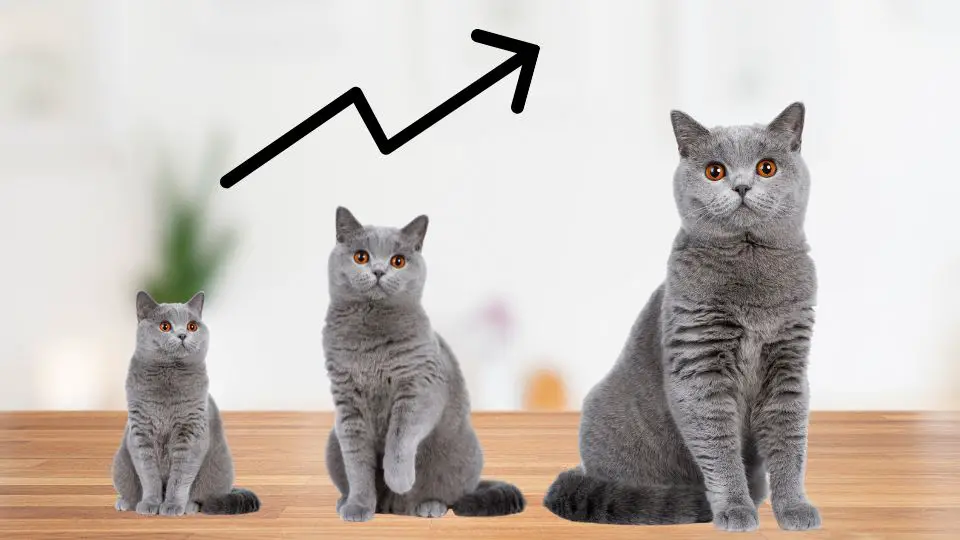British Shorthair cats are a beloved breed among cat lovers for their affectionate personalities and adorable looks. Unfortunately, they are also prone to certain health problems, one of which is Polycystic Kidney Disease (PKD).
PKD is an inherited condition that can lead to kidney failure and other complications in British Shorthair cats.
In this article, we will discuss the causes, signs and symptoms, diagnosis, treatment, and prevention of PKD in British Shorthair cats.
Causes of PKD in British Shorthair cats
Polycystic kidney disease (PKD) is a genetic disorder that affects British Shorthair cats. PKD causes the growth of numerous cysts in the kidneys, which can lead to organ damage and, in severe cases, kidney failure. Understanding the causes of PKD is essential to prevent and manage the disease in British Shorthair cats.
- Genetic mutation: PKD in British Shorthair cats is caused by a genetic mutation that affects the development of kidney cells. This mutation results in the formation of multiple cysts, which can grow and eventually cause kidney dysfunction.
- Inheritance: PKD is an inherited disease in British Shorthair cats. The disease is passed down from parent cats to their offspring through dominant genes. This means that if a British Shorthair cat inherits the PKD gene from either parent, they are likely to develop the disease.
Note that not all cats with the PKD gene will develop the disease. Some cats may carry the gene but remain unaffected. However, these cats can still pass the gene on to their offspring, making genetic testing an essential tool in the prevention and management of PKD in British Shorthair cats.
Signs and symptoms of PKD in British Shorthair cats
PKD is caused by a mutation in the PKD1 gene that leads to the development of multiple cysts in the kidneys. These cysts can grow over time, and if left untreated, can cause kidney failure. In this article, we will discuss the signs and symptoms of PKD in British Shorthair cats.
Increased thirst and urination
One of the earliest signs of PKD in cats is increased thirst and urination. This is because the growing cysts in the kidneys can interfere with their ability to properly filter and regulate fluids in the body. As a result, affected cats may drink and urinate more than usual.
Decreased appetite and weight loss
As PKD progresses, affected cats may experience a decreased appetite and subsequent weight loss. This can be due to a combination of factors, including nausea, vomiting, and a decreased ability to absorb nutrients from food.
Vomiting and diarrhea
Cats with PKD may also experience vomiting and diarrhea, which can be due to the buildup of toxins in the body as a result of kidney dysfunction.
Lethargy and weakness
As the kidneys continue to deteriorate, cats with PKD may become increasingly lethargic and weak. This can be due to a combination of factors, including dehydration, malnutrition, and the accumulation of waste products in the body.
Diagnosis of PKD in British Shorthair cats
The diagnosis of PKD in British Shorthair cats typically involves a combination of physical examination, ultrasound, and genetic testing. During the physical examination, the veterinarian will look for signs of kidney enlargement or abnormality in the cat’s abdomen. Ultrasound is a non-invasive imaging technique that can provide detailed images of the kidneys and any cysts that may be present. Genetic testing can also be performed to confirm the presence of the PKD mutation in the cat’s DNA.
Note that not all cats with PKD will exhibit symptoms, especially in the early stages of the disease. Therefore, regular veterinary check-ups are essential to catch the disease early on and begin appropriate treatment. If your cat is diagnosed with PKD, your veterinarian will work with you to develop a treatment plan to manage the condition and slow its progression.
Overall, the diagnosis of PKD in British Shorthair cats requires a thorough evaluation by a veterinarian. With early detection and appropriate management, many cats with PKD can live long and healthy lives. Regular check-ups and genetic testing can help identify cats at risk for PKD, allowing for early intervention and better outcomes.
Treatment and management of PKD in British Shorthair cats
If left untreated, PKD can be life-threatening for affected cats. Fortunately, there are various treatment and management options available to help cats with PKD live longer, healthier lives.
Here are some of the treatment and management options for PKD in British Shorthair cats:
- Medications to manage symptoms: While there is no cure for PKD, medications can help manage some of the symptoms associated with the disease. For example, cats with PKD may benefit from medications to control high blood pressure or urinary tract infections.
- Fluid therapy: As PKD progresses, the cysts in the kidneys can lead to dehydration and electrolyte imbalances. To prevent these issues, cats with PKD may require fluid therapy to maintain their hydration and electrolyte levels.
- Dietary changes: Feeding a specialized diet can help manage the symptoms of PKD and slow the progression of the disease. A diet low in protein, sodium, and phosphorus is typically recommended for cats with PKD. This type of diet can help reduce the workload on the kidneys, while also minimizing the formation of cysts.
In some cases, affected cats may require more intensive treatments, such as surgery to remove the affected kidney. However, this is usually reserved for more severe cases of PKD.
Prevention of PKD in British Shorthair cats
Genetic testing and selection is the most effective way to prevent PKD in British Shorthair cats. Breeders can screen their cats for the PKD gene and only breed those that do not carry the mutation. This can help ensure that kittens will not inherit the disease from their parents. Regular veterinary check-ups are also important for monitoring the health of British Shorthairs, especially those that may be at risk for PKD due to their breed or family history.
Remember that, while there is no cure for PKD, with proper management, cats can live long and comfortable lives with the condition. By taking steps to prevent and manage PKD, British Shorthair cats can continue to bring joy and companionship to their owners for many years.
Conclusion
PKD is a serious condition that affects many British Shorthair cats. Although it is an inherited condition, there are steps that owners can take to manage the disease and improve their cat’s quality of life.
By being aware of the signs and symptoms, scheduling regular veterinary check-ups, and making dietary and lifestyle changes, owners can help prevent or manage PKD in their beloved British Shorthair cats. With proper care and attention, cats with PKD can still live happy and fulfilling lives.







